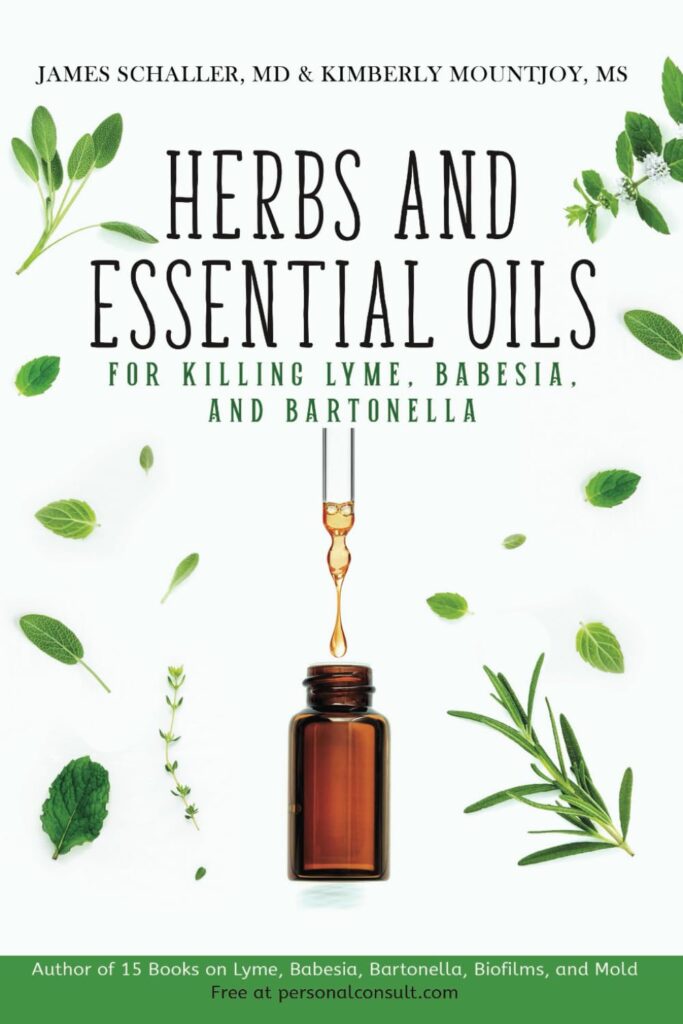
[Summary quotes bv James Schaller, MD, MAR who is a Lyme Literate doctor (LLMD) with 12 Textbooks on Lyme disease and coinfections]
We need as many options to treat emerging infections like Bartonella as possible. While some of our experience since approximately 2002 has shown Bartonella cures with advanced repeated microbiology and cytokine tracking. In the microbiology self-funded research, we have literally seen 50 Bartonella per approximately 75–100 red blood cells on blood smears slowly drop to none. And inflammatory or anti inflammatory chemicals in human blood move from Bartonella’s exact effects to normal after aggressive pioneering treatments to destroy Bartonella and its protective wall of biofilm.
This study lists Bartonella treatments examined in test tubes we also believe are effective. They list: Cryptolepis sanguinolenta, Juglans nigra (Black Walnut), Polygonum cuspidatum, Scutellaria baicalensis (huang qin), and Scutellaria barbata (ban zhi lian) Among them, Cryptolepis sanguinolenta, Juglans nigra, and Polygonum cuspidatum could eradicate all stationary phase B. henselae cells within 7 days.
In contrast, Andrographis paniculate, Stevia rebaudiana, Artemisia annua, Uncaria rhynchophylla, Uncaria tomentosa, Rhizoma coptidis, Citrus paradise, Dipsacus fullonum, Campsiandra angustifolia, Otoba parvifolia and colloidal silver did not show significant activity against stationary phase Bartonella henselae
At this time, we need more and more treatment options and this study supports the treatments of others and what herbal treatments are useful and published in tour recent book on the use of research based herbs and essential oils to kill Bartonella, Babesia and Lyme disease. [See this book cover attached with treatments limited to treatments with research support].
We want help to enhance treatment options. And to mention them in our pending definitive Bartonella Textbook.
In this useful study they “successfully identified various botanical [plant] extracts with activity against stationary phase B. henselae, which has successfully been used as a model of persister drug screens because of its higher content of persister cells.”
Source: Botanical Medicines with Activity against Stationary Phase Bartonella henselae.Xiao Ma, Jacob Leone, Sunjya Schweig, Ying Zhang
Preprint.
